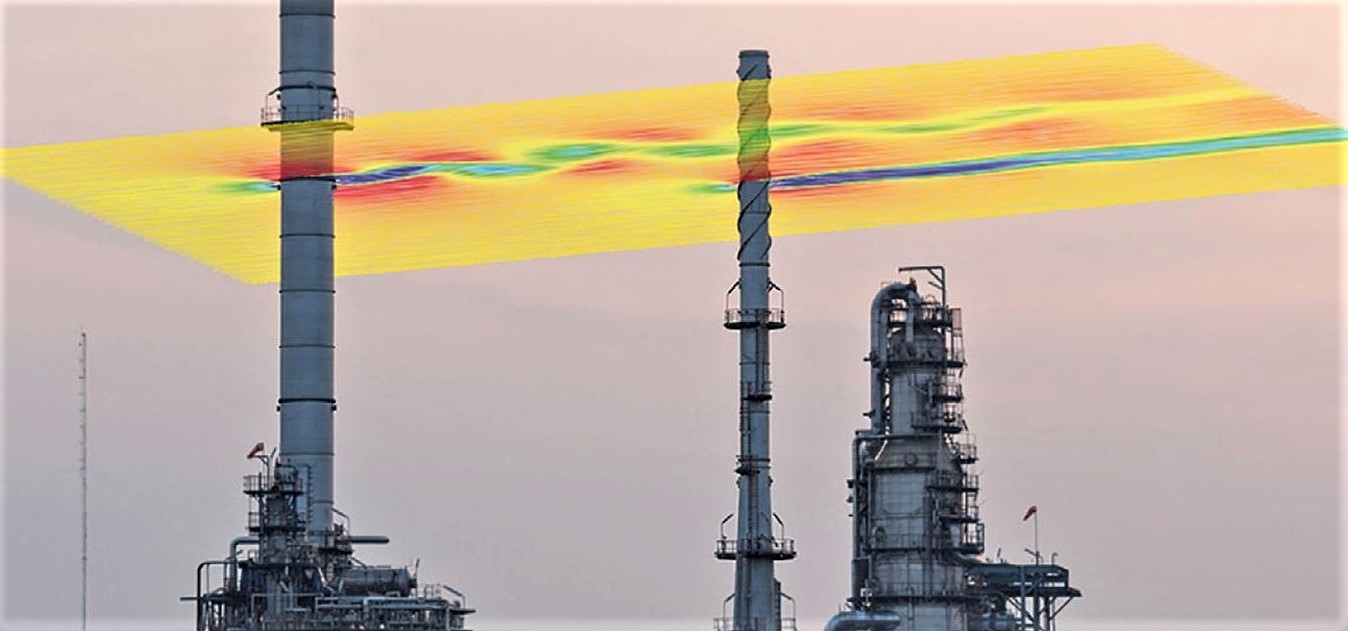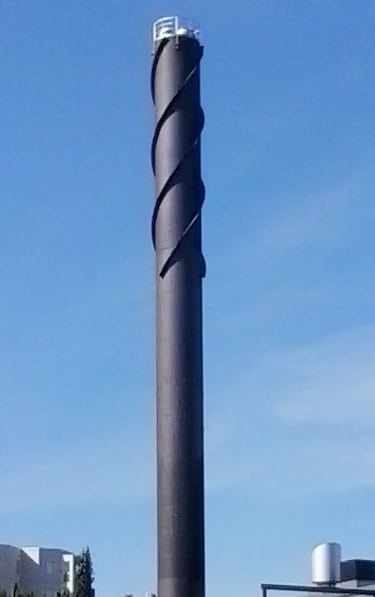Getting Twisted about Helical Strakes

If you have a vortex shedding problem on a stack, then in some cases helical strakes are your best option; however, there are other cases where helical strakes are not the best option.
When not to use Helical Strakes?
If there is another stack (or tall structure) that is nearby, then the interference effects will cause the strakes to become inadequate for stopping vortex shedding. The rule of thumb is that no other tall stacks or structures within about 10 to 15 diameters of the stack. For example, if the stack was 3 m OD, then we need to make sure that we don’t have any other tall structures within 3 m x 15 = 45 m.
The Euro Standard EN 1993-3-2 has some additional criteria for strakes, see ‘Does MecaStack indicate if the strakes will work’ for details.

What are the Disadvantages of using Strakes?
Does MecaStack indicate if the strakes will work?
Check 1: 4.5b <= Strake Pitch <= 5b
Check 2: 0.1b <= Strake Depth <= 0.12b
Check 3: 0.3h <= Strake Length <= 0.5h
Check 4: Unstraked portion at top <= b
Check 5: Scruton Number > 8
where b = Stack Diameter, h = Stack Height
